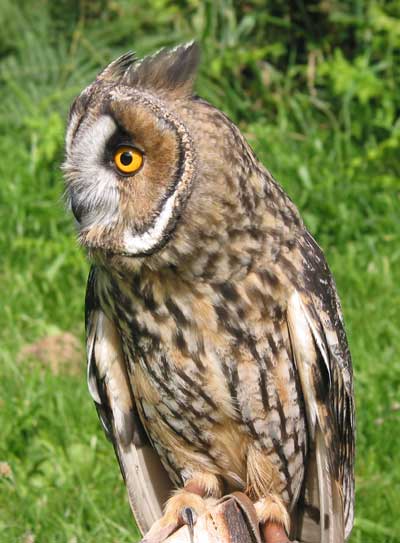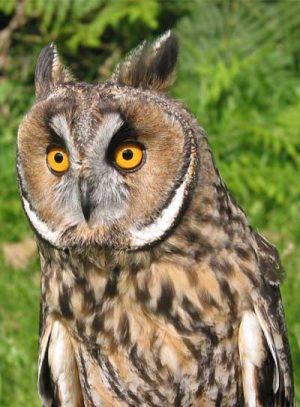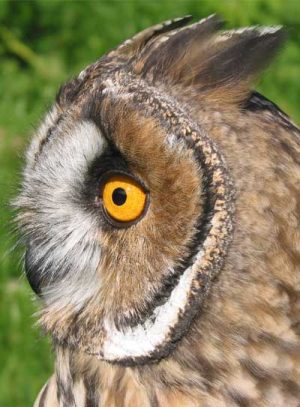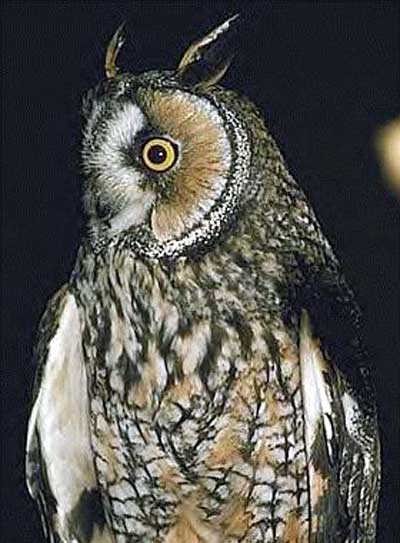Description:
This elusive owl is slender in shape with long tufts that are mistakenly taken for ears, which are actually situated at the side of the head. Male and female are almost identical with buff and brown mottled plumage and fiery orange colour eyes.
Distribution:
Widely distributed throughout northern England and north east Scotland with pockets in south east England and Wales with winter visitor from Scandinavia.. It is the commonest owl in Ireland.
Worldwide Distribution:
Eurasia from Iberia to Japan and also widely distributed in North America.
Habitat:
Mainly found in conifer woodland on the edge of lowland heaths. They also occur in copses and thick hedges and belts of trees in open farmland.
Diet:
Usually small mammals: mice and voles but also take birds, rats and insects.
Breeding:
Breeds mainly in abandoned crows’ nests from March to June with 3 to 6 eggs. The incubation period is 27 to 28 days. The young fledge from 30 days.
Call:
The owl’s call is a low, quiet hoot, the young owlets make a sound like a squeaky gate. When alarmed, Long-eared owls hiss or shriek like a cat.




